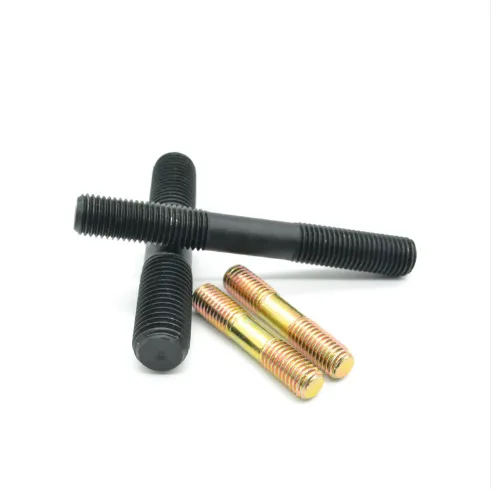custom captive bolts
Dec . 07, 2024 12:11 Back to list
custom captive bolts
Understanding Custom Captive Bolts Their Design, Applications, and Benefits
Custom captive bolts are essential components in various industries, serving a multitude of purposes while ensuring safety and efficiency. These specialized fasteners are designed to remain attached to an assembly, preventing loss or misplacement—an advantageous feature that sets them apart from standard bolts. This article delves into the design, applications, and benefits of custom captive bolts, highlighting why they are favored in many engineering contexts.
Design and Characteristics
Custom captive bolts are made to meet specific requirements according to the needs of different applications. Unlike standard bolts, captive bolts are designed with a retention feature that allows the bolt to stay with the assembly even when loosened or removed. This is typically achieved by incorporating a built-in mechanism, such as a collar or a head that prevents the bolt from being completely detached.
Manufacturers can customize captive bolts in various ways, including the material, length, diameter, and head type. Common materials include stainless steel, aluminum, and nylon, chosen for their durability, corrosion resistance, and lightweight properties. The customization process allows designers to create bolts that are not only functional but also compatible with the existing systems they are intended for.
Applications Across Industries
The versatility of custom captive bolts makes them suitable for a wide range of applications across diverse industries. They are commonly used in aerospace, automotive, electronics, and construction sectors, where reliability and safety are paramount.
In the aerospace industry, for example, custom captive bolts are crucial for securing aircraft components, where even minor failures can have catastrophic consequences. Their ability to remain attached minimizes the risk of losing vital fasteners during maintenance or repair operations. Similarly, in automotive applications, captive bolts are used for critical assemblies, ensuring that parts stay secure under various operating conditions.
custom captive bolts

The electronics sector also benefits from custom captive bolts. They are often used in the assembly of electronic devices, providing a reliable method for securing circuit boards and other sensitive components. Their design prevents accidental disassembly during handling or transportation, enhancing the overall durability of the product.
Benefits of Custom Captive Bolts
One of the primary advantages of custom captive bolts is increased efficiency in assembly and maintenance processes. Since the bolts remain attached to their designated location, technicians can work more quickly without the fear of losing them. This efficiency translates into reduced downtime and lower labor costs, which is a significant advantage for manufacturers.
Moreover, custom captive bolts enhance safety. The risk of components becoming loose and causing accidents is markedly decreased. This is particularly critical in high-stakes industries such as aerospace and automotive, where the integrity of fastened parts is vital.
Another benefit is the flexibility offered by customization. Manufacturers can work closely with engineers to develop bolts that perfectly match their specifications, leading to better performance and longer service life. This tailored approach can help optimize the design of the entire assembly, contributing to improvements in efficiency and overall product quality.
Conclusion
In conclusion, custom captive bolts play a pivotal role in multiple industries by providing secure, reliable, and efficient fastening solutions. Their ability to remain attached during installation and maintenance not only enhances safety and efficiency but also allows for greater flexibility in design. As technology advances and industry demands evolve, the importance of custom captive bolts will continue to grow, solidifying their place as indispensable components in modern engineering.
Latest news
-
High-Quality Panel Stud Bolt Reliable Panel Stud Bolt Factory & Suppliers
NewsJul.08,2025
-
High-Precision Fine Thread Locknuts Manufacturer & Supplier Custom Solutions
NewsJul.08,2025
-
PH Imperial Stud Bolt – High Strength Fasteners from Leading Supplier & Factory
NewsJul.07,2025
-
High-Quality Allen Wrench Bolts Leading Factory, Company & Suppliers
NewsJul.07,2025
-
Wholesale Ball Stud Bolt - High Quality Supplier & Factory Price Reliable Wholesale Ball Stud Bolt Company
NewsJul.06,2025
-
High-Strength Alloy Bolts Manufacturer & Supplier Quality Alloy Fasteners Factory
NewsJul.06,2025
